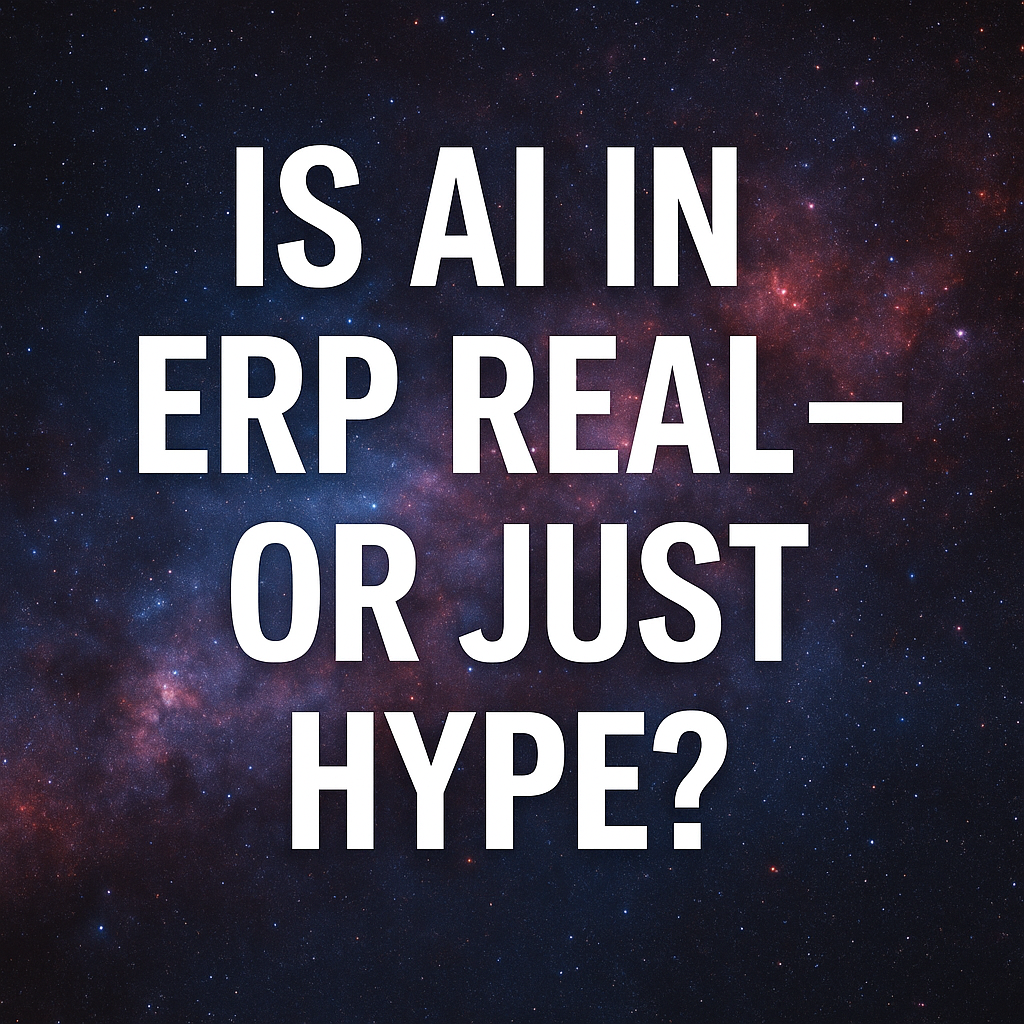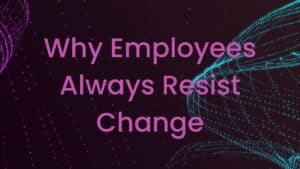In 2025, AI is everywhere—headlines, vendor demos, boardroom discussions. And now, ERP software vendors are jumping into the hype, promising that artificial intelligence will completely transform how businesses run their operations. But is it actually happening? Or are we still years away from truly integrated AI capabilities in ERP?
The truth is somewhere in between. There are real use cases. There’s also a lot of smoke and mirrors.
Table of Contents
ToggleThe AI + ERP Reality Check
Let’s start with the big question we hear from clients all the time at Third Stage Consulting: Is embedded AI in ERP systems legit—or is it marketing fluff?
The answer: sort of.
Some ERP vendors are beginning to integrate AI in ways that deliver real value, but much of the market is still figuring it out. In our work helping organizations evaluate ERP systems and define digital strategies, we’re seeing the most traction in a few specific areas:
- High-volume data processing: Manufacturing, supply chain, and financial processes are seeing gains from AI automation. Take material requirements planning (MRP)—traditionally a manual, error-prone task. AI-enhanced MRP engines can now factor in far more internal and external data points to optimize raw material purchases and production schedules.
- Financial close automation: Month-end and quarter-end processes can be tedious and slow. AI is helping finance teams accelerate reconciliations, detect anomalies, and even generate predictive insights.
- Sales quoting: Generative AI is helping streamline how sales teams build proposals and quote pricing—reducing manual work and increasing speed to customer.
- Supply chain visibility: AI’s ability to ingest and interpret global data—from tariffs and wars to logistics bottlenecks—is reshaping supply chain strategy and operations.
- User interface (UI): Ironically, one of the most impactful AI use cases isn’t what most expect. AI-powered UIs are turning legacy ERP experiences from clunky and unintuitive into fast, human-like conversations. Instead of building custom reports or digging for data, users can now ask the system, “What were our top-selling SKUs in Q1 by margin?” and get an immediate answer. That’s a game-changer.
The Hidden Cost: AI Is a People Disruptor
For all the buzz, there’s a side few vendors are talking about: the people impact.
AI isn’t just a technology play. It’s a massive organizational disruptor. And it’s going to shake up roles, responsibilities, and job security in ways ERP systems never could.
Why? Because many employees have spent years building their expertise around outdated workflows and heroics—brute-force spreadsheets, tribal knowledge, manual data pulls. Suddenly, AI makes all of that obsolete. And for employees who’ve long been the “go-to” person for those processes, the shift can feel threatening, even personal.
That fear leads to resistance. And resistance leads to transformation failure.
So, while it may streamline operations, it can also create fear, uncertainty, and chaos if organizations aren’t proactively addressing the human side of change.
Bottom line: Implementing AI—especially when combined with ERP modernization—makes change management non-negotiable. If your organization isn’t already prioritizing organizational change strategies, it needs to start.
The Dirty Little Secret ERP Vendors Don’t Want You to Know
Now here’s the kicker: You don’t need to upgrade your entire ERP system to benefit from AI.
Vendors will say you do. They’ll push you to rip and replace your legacy system to access “next-gen” AI tools. But you can access many of the same capabilities without the cost, risk, and timeline of a full ERP overhaul.
There are dozens of independent, tech-agnostic AI tools on the market today that can layer onto existing ERP environments—even 10- to 15-year-old on-premise systems—as long as they’re web-enabled. These tools deliver fast ROI, cause less disruption to your workforce, and can evolve alongside your digital strategy.
In fact, we’ve seen organizations get more immediate value from stand-alone AI implementations than from fully embedded “AI-infused” ERP rollouts—especially when their core systems still work reasonably well.
If your ERP system isn’t broken, and your business is eager to explore AI, you have options. And they may be a lot more pragmatic than what your vendor is pitching.
Where Should You Start?
If you’re feeling the pressure to “do something with AI” but aren’t sure how to balance that with ERP priorities, take a step back. Don’t fall into the trap of assuming an ERP overhaul is the only way forward.
Instead, ask:
- Where can AI help our business today?
- What AI solutions align with our actual challenges?
- How can we get value before committing to a massive transformation?
To help guide these conversations, Third Stage Consulting offers two free resources:
- The 2025 Digital Transformation Report: Includes software rankings, tech trends, and transformation best practices.
- AI Strategy & Implementation Guide: Helps you define where AI fits in your digital roadmap, whether it’s part of ERP or a standalone initiative.
Final Thoughts
AI in ERP isn’t just hype—but it isn’t fully here either. The good news? You don’t have to wait years or spend millions to start seeing results. With the right strategy—and a realistic view of your tech stack and people—you can start tapping into the value of AI right now.
Just don’t forget: Technology is the easy part. The real challenge is preparing your organization for what’s coming next.
Want to explore how your business can leverage AI without breaking the bank or your existing ERP system? Connect with our team or check out the upcoming Stratosphere 2025 conference and Executive Mastermind program.
We’ll help you separate the reality from the hype—and find your own third stage of transformation.






